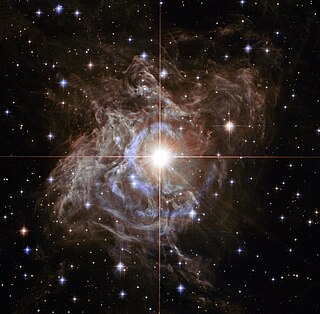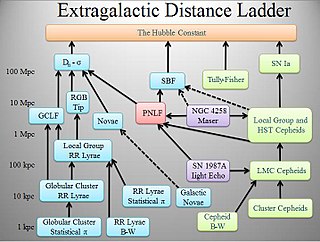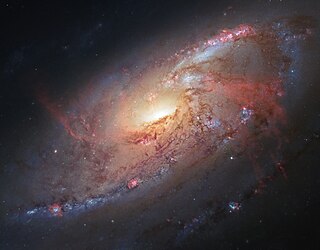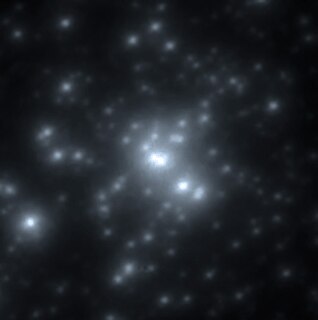The Araucaria Project is an international science collaboration focused on improving the calibration of the extragalactic distance scale based on observations of major distance indicators in several nearby galaxies.
The Araucaria Project is an international science collaboration focused on improving the calibration of the extragalactic distance scale based on observations of major distance indicators in several nearby galaxies.
The Araucaria Project is a collaboration between astronomers from institutions in Europe, Chile and the US. Its principal aim is to provide an improved calibration of the local extragalactic distance scale. In the process of setting up the extragalactic distance scale, the greatest difficulty leading to the currently largest contribution on the systematic uncertainty of the Hubble constant lies in the determination of accurate absolute distances to nearby galaxies. The principal reason for this persisting difficulty is in the unknown dependencies of stellar standard candles, used to measure the distances of nearby galaxies, on the environmental properties of their host galaxies (metallicity, age of the stellar populations etc.). The Araucaria Project is an effort to remedy this situation for several of the most important stellar candles, including Cepheid variables, RR Lyrae stars, red clump giants, and blue supergiants which all have the potential to provide accurate distance determinations to nearby galaxies once their environmental dependencies are well calibrated.
The sample of galaxies include NGC 6822, IC 1613 and NGC 3109 in the Local Group, and NGC 55, NGC 247, NGC 300 and NGC 7793 in the Sculptor Group.

The Large Magellanic Cloud (LMC) is a satellite galaxy of the Milky Way. At a distance of around 50 kiloparsecs (≈160,000 light-years), the LMC is the second or third closest galaxy to the Milky Way, after the Sagittarius Dwarf Spheroidal (~16 kpc) and the possible dwarf irregular galaxy known as the Canis Major Overdensity. Based on readily visible stars and a mass of approximately 10 billion solar masses, the diameter of the LMC is about 14,000 light-years (4.3 kpc). It is roughly a hundredth as massive as the Milky Way and is the fourth largest galaxy in the Local Group, after the Andromeda Galaxy (M31), the Milky Way, and the Triangulum Galaxy (M33).

A Cepheid variable is a type of star that pulsates radially, varying in both diameter and temperature and producing changes in brightness with a well-defined stable period and amplitude.

The Small Magellanic Cloud (SMC), or Nubecula Minor, is a dwarf galaxy near the Milky Way. Classified as a dwarf irregular galaxy, the SMC has a diameter of about 7,000 light-years, contains several hundred million stars, and has a total mass of approximately 7 billion solar masses. The SMC contains a central bar structure, and astronomers speculate that it was once a barred spiral galaxy that was disrupted by the Milky Way to become somewhat irregular. At a distance of about 200,000 light-years, the SMC is among the nearest intergalactic neighbors of the Milky Way and is one of the most distant objects visible to the naked eye.

RR Lyrae variables are periodic variable stars, commonly found in globular clusters. They are used as standard candles to measure (extra) galactic distances, assisting with the cosmic distance ladder. This class is named after the prototype and brightest example, RR Lyrae.

The cosmic distance ladder is the succession of methods by which astronomers determine the distances to celestial objects. A real direct distance measurement of an astronomical object is possible only for those objects that are "close enough" to Earth. The techniques for determining distances to more distant objects are all based on various measured correlations between methods that work at close distances and methods that work at larger distances. Several methods rely on a standard candle, which is an astronomical object that has a known luminosity.

Messier 62 or M62, also known as NGC 6266, is a globular cluster of stars in the south of the equatorial constellation of Ophiuchus. It was discovered in 1771 by Charles Messier, then added to his catalogue eight years later.

Messier 106 is an intermediate spiral galaxy in the constellation Canes Venatici. It was discovered by Pierre Méchain in 1781. M106 is at a distance of about 22 to 25 million light-years away from Earth. M106 contains an active nucleus classified as a Type 2 Seyfert, and the presence of a central supermassive black hole has been demonstrated from radio-wavelength observations of the rotation of a disk of molecular gas orbiting within the inner light-year around the black hole. NGC 4217 is a possible companion galaxy of Messier 106. A Type II supernova was observed in M106 in May 2014.

RT Aurigae is a yellow supergiant variable star in the constellation Auriga, about 1,500 light years from Earth.

R136b is a Wolf–Rayet star in the R136 cluster in the Large Magellanic Cloud. It is one of the most massive and most luminous stars known. It is found in the dense R136 open cluster at the centre of NGC 2070 in the Tarantula Nebula.

Type II Cepheids are variable stars which pulsate with periods typically between 1 and 50 days. They are population II stars: old, typically metal-poor, low mass objects.

Classical Cepheids are a type of Cepheid variable star. They are population I variable stars that exhibit regular radial pulsations with periods of a few days to a few weeks and visual amplitudes from a few tenths of a magnitude to about 2 magnitudes.

Melnick 42 is a massive blue supergiant star in the Tarantula Nebula in the Large Magellanic Cloud located in the constellation Dorado. Although it is only 21 times the size of the sun, its high temperature of 47,300 K makes it one of the most luminous stars of the Tarantula Nebula at 3,600,000 L☉. It is less than two parsecs from the centre of the R136 cluster, although that is well outside the central core.

R136a2 is a Wolf-Rayet star residing near the center of the R136, the central concentration of stars of the large NGC 2070 open cluster in the Tarantula Nebula, a massive H II region in the Large Magellanic Cloud which is a nearby satellite galaxy of the Milky Way. It has one of the highest confirmed masses and luminosities of any known star, at about 187 M☉ and 5.6 million L☉ respectively.
HD 38282 is a massive spectroscopic binary star in the Tarantula Nebula, consisting of two hydrogen-rich Wolf-Rayet stars.

R136a3 is a Wolf–Rayet star in R136, a massive star cluster located in Dorado. It is located near R136a1, the most massive and luminous star known. R136a3 is itself one of the most massive and most luminous stars known at 154 times more massive and 4.26 million times more luminous than the Sun.

Kappa Pavonis is a variable star in the constellation Pavo. It is the brightest W Virginis variable in the sky.
BL Boötis is a pulsating star in the constellation Boötes. It is the prototype of a class of anomalous Cepheids which is intermediate in the H-R diagram between the type I classical Cepheids and the type II Cepheids.

OGLE-LMC-CEP0227 is an eclipsing binary star, pulsating every 3.8 days. The star, in the Large Magellanic Cloud, was the first Cepheid star system found to be orbiting exactly edge on.

NGC 1466 is the New General Catalogue designation for a globular cluster in the deep southern constellation of Hydrus. It is located in the outskirts of the Large Magellanic Cloud, which is a satellite galaxy of the Milky Way. The object was discovered November 26, 1834 by English astronomer John Herschel. John Dreyer described it as "pF, pS, iR, glbM, *7 f", meaning "pretty faint, pretty small, irregular round, gradually a little brighter middle, with a 7th magnitude star nearby". When using a small telescope, this is a "faint, small, unresolved and difficult" target with an angular size of 1.9 arc minutes. It has an integrated visual magnitude of 11.4.

In astronomy, a period-luminosity relation is a relationship linking the luminosity of pulsating variable stars with their pulsation period. The best-known relation is the direct proportionality law holding for Classical Cepheid variables, sometimes called Leavitt's law. Discovered in 1908 by Henrietta Swan Leavitt, the relation established Cepheids as foundational indicators of cosmic benchmarks for scaling galactic and extragalactic distances. The physical model explaining the Leavitt's law for classical cepheids is called kappa mechanism.